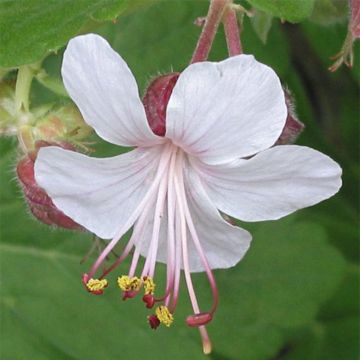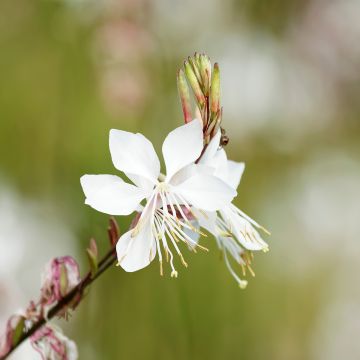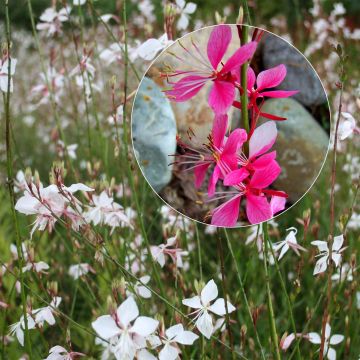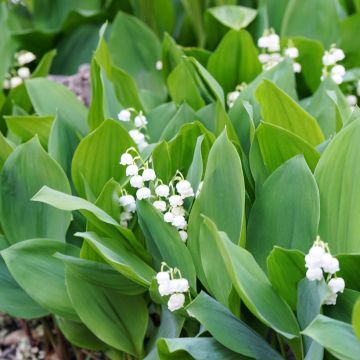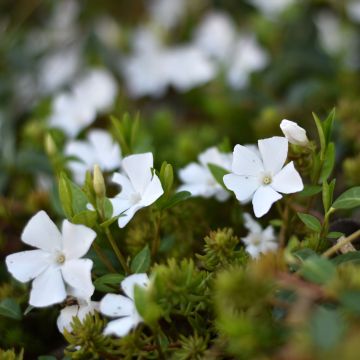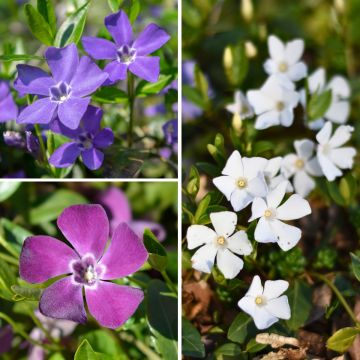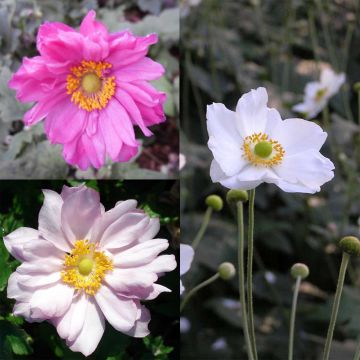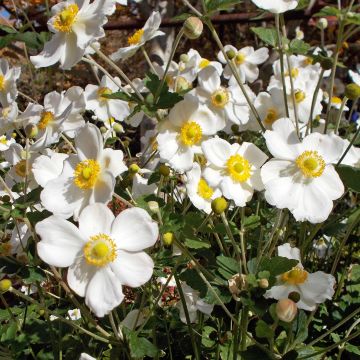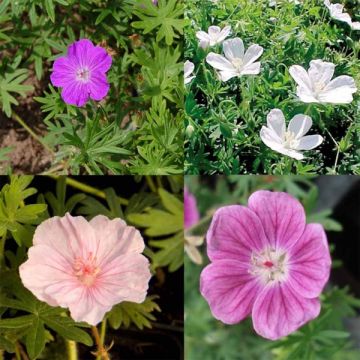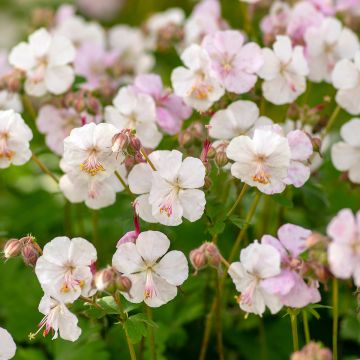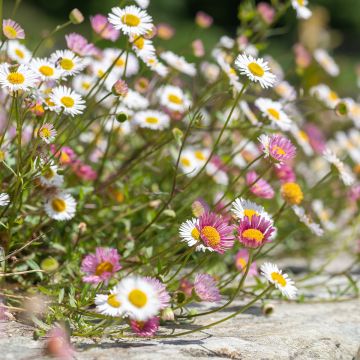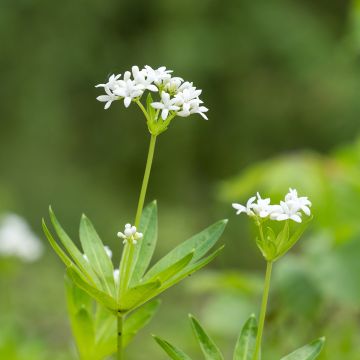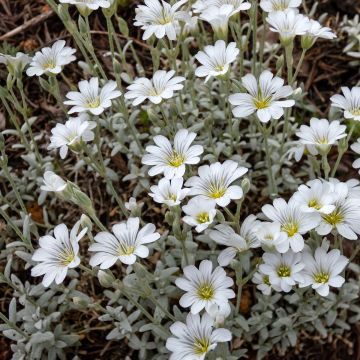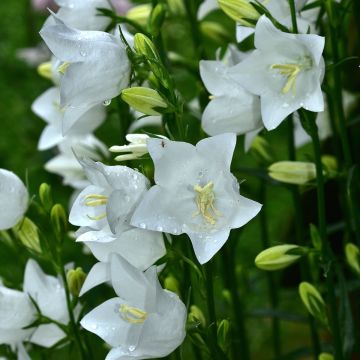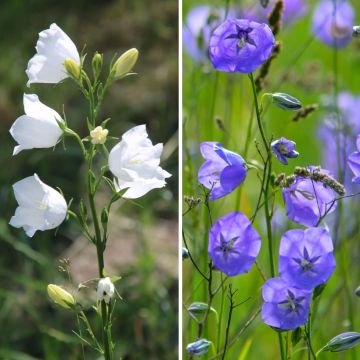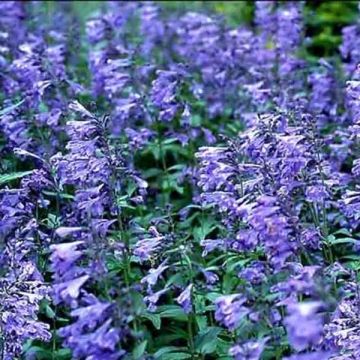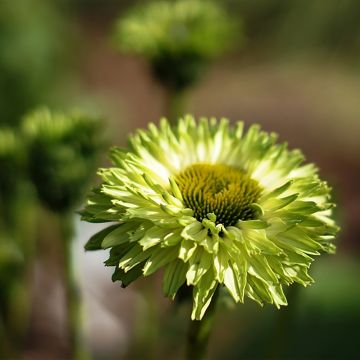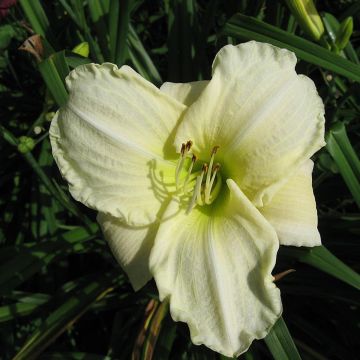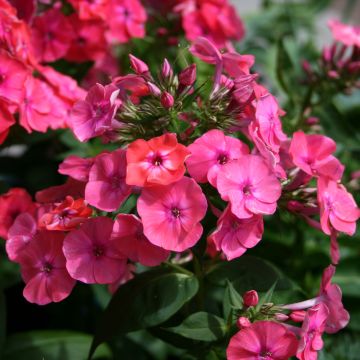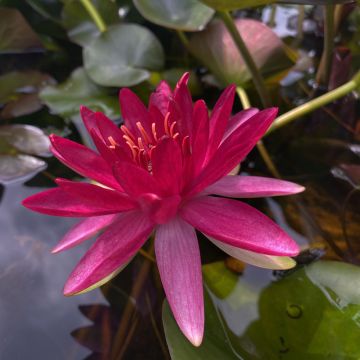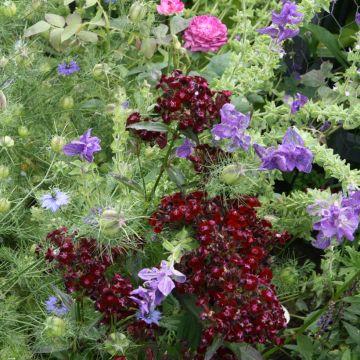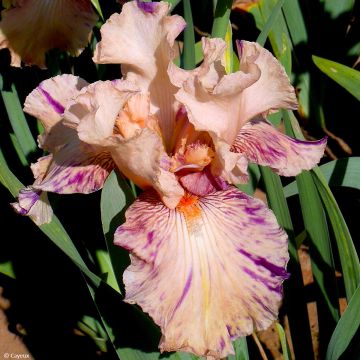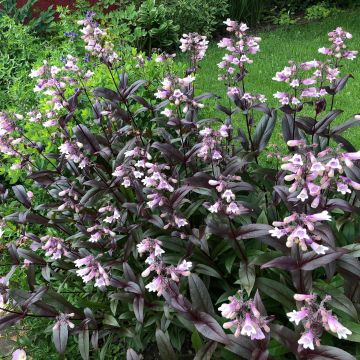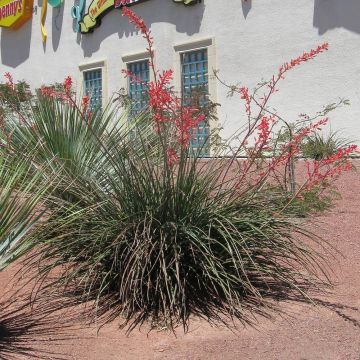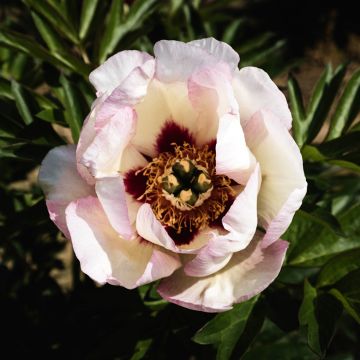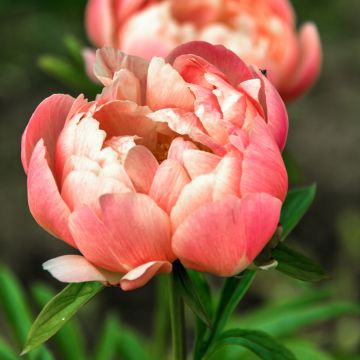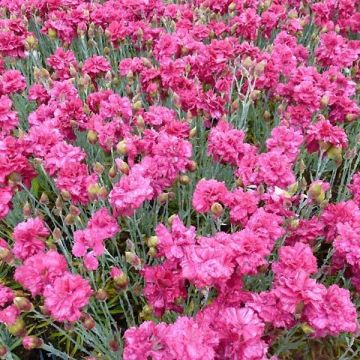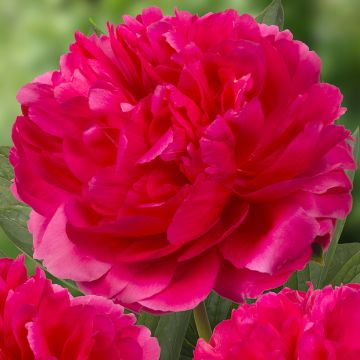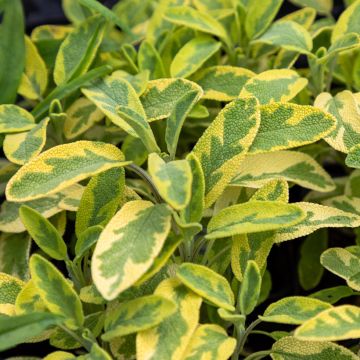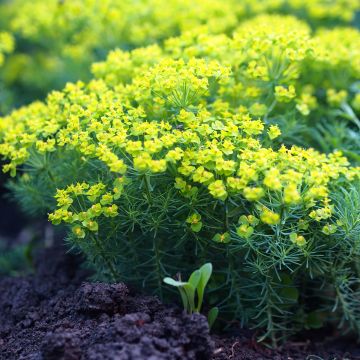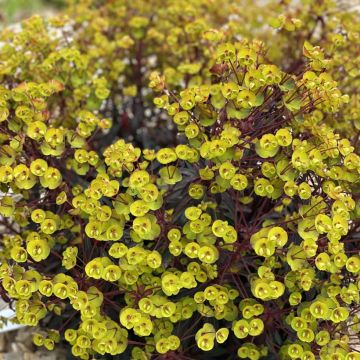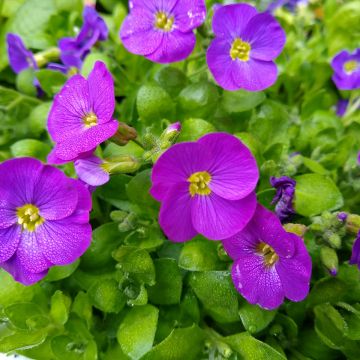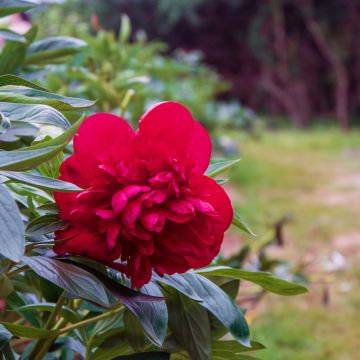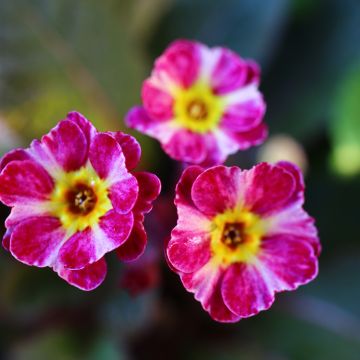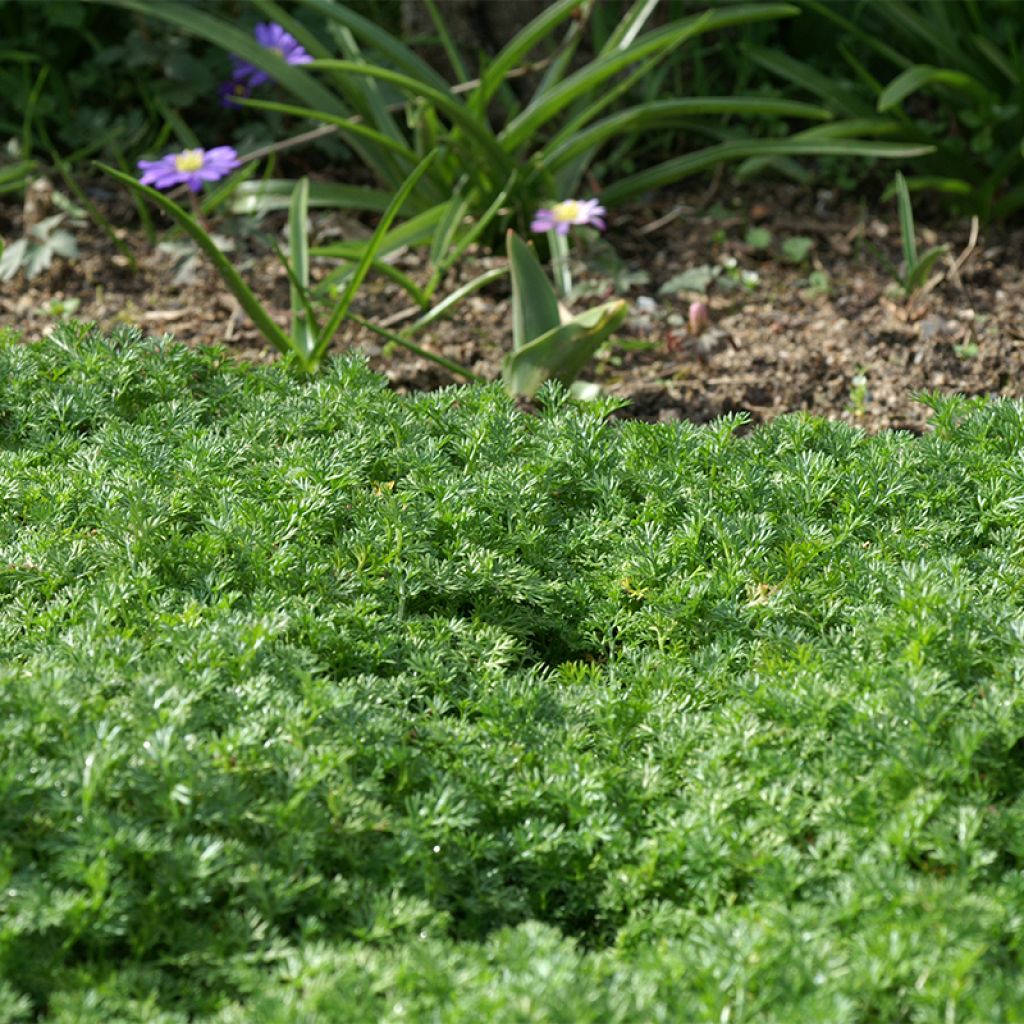

Matricaria tchihatchewii - Pyrèthre gazonnant
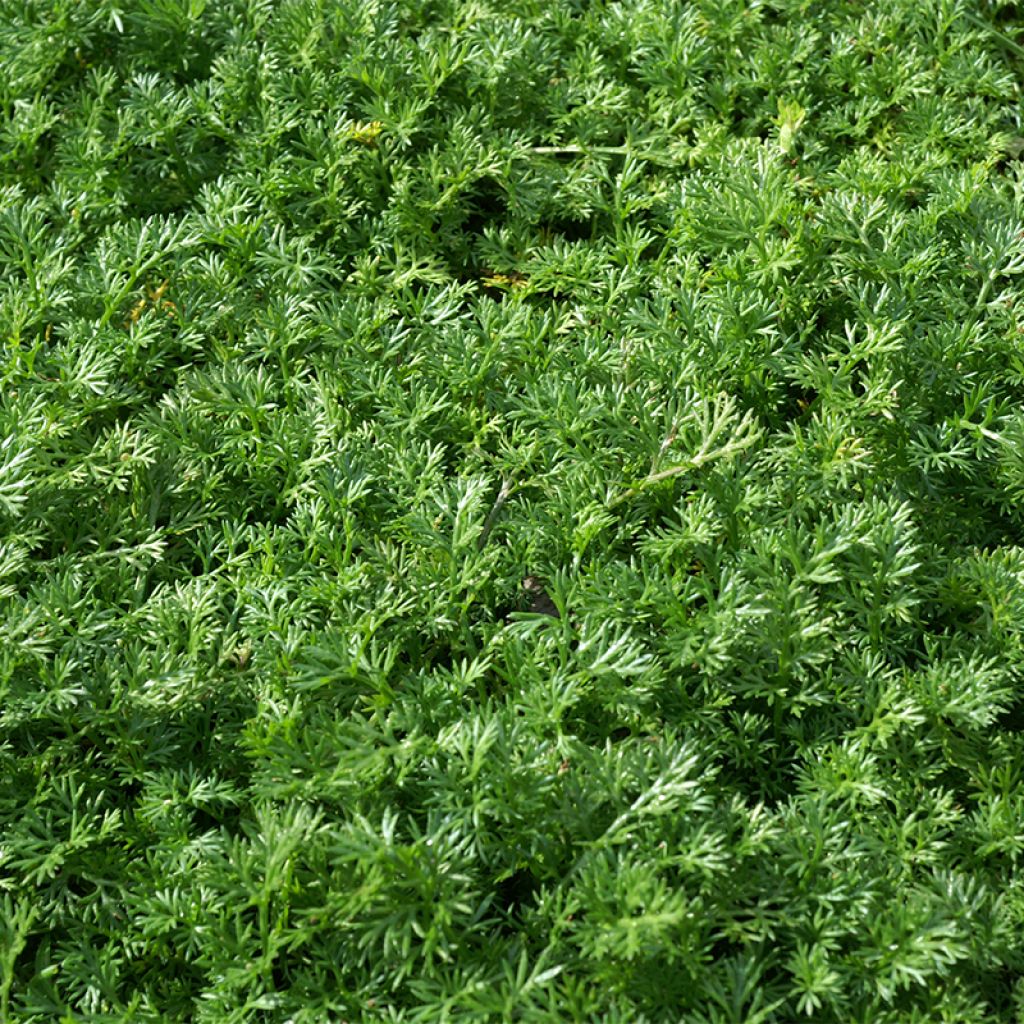

Matricaria tchihatchewii - Pyrèthre gazonnant
Matricaria tchihatchewii
Matricaria tchihatchewii
Turfing Daisy
Why not try an alternative variety in stock?
View all →This plant carries a 12 months recovery warranty
More information
We guarantee the quality of our plants for a full growing cycle, and will replace at our expense any plant that fails to recover under normal climatic and planting conditions.
From €5.90 for pickup delivery and €6.90 for home delivery
Express home delivery from €8.90.
Does this plant fit my garden?
Set up your Plantfit profile →
Description
Matricaria tchihatchewii, also known as turfing daisy, creeping pyrethrum or creeping chamomile, is a perennial plant often used as ground cover or as an alternative to grass in small areas with light foot traffic. It quickly forms a thick, curly-looking carpet of fresh green foliage, which is decorative in winter. From spring to early summer, it is adorned with an abundance of small white daisy-like flowers. Used as a lawn substitute, this chamomile requires regular manual weeding and occasional watering, depending on the region. It can also be planted in rock gardens, on banks, or along pathways.
Matricaria tchihatchewii belongs to the Asteraceae family, just like daisies and chamomiles. This species is hardy down to at least -15°C (5°F) and is native to rocky steppes in Asia Minor and the Mediterranean region (from the Caucasus to eastern Turkey, Syria, Lebanon, Palestine, Jordan, and Iraq). It is a perennial plant with rooting stems, meaning it can root at the nodes. Its growth rate is quite rapid. The vegetation forms a carpet that reaches a height of 3 to 5cm (1 to 2in) and spreads laterally for at least 50cm (20in). The leaves persist through winter, but they may become deciduous in summer if the soil is very dry. The plant will green up again with the first autumn rains. The leaves are finely divided and aromatic when crushed. Flowering occurs from April-May to July, starting earlier and often being shorter in warmer regions. The flowers are arranged in small white heads with yellow centres, measuring about 2cm (1in) in diameter. They are produced abundantly above the foliage.
Plant it in a small, lightly trafficked area that is easily accessible if it's intended to replace grass. This plant tolerates light foot traffic and should only be mowed after flowering. In this usage, it can be combined with other vigorous ground cover perennials such as Achillea crithmifolia, Lippia, Zoysia tenuifolia, Falkia repens, or Dichondra repens. It can also be planted at the base of shrubs and hedges, on top of walls, in rock gardens, or along the edge of stairs, accompanied by Erigeron karvinskianus, thymes, or dwarf artemisias, for example. It also pairs well on banks with drought-tolerant perennials and shrubs such as lavender, cistus, rosemary, broom, cerastostigma, and valerian, which will emerge from its carpet.
Report an error about the product description
Flowering
Foliage
Plant habit
Botanical data
Matricaria
tchihatchewii
Asteraceae
Turfing Daisy
West Asia
Other Perennials A to Z
Planting and care
Creeping chamomile can be planted in full sun or partial shade, in any type of soil, but preferably loose, well-drained, and carefully weeded. 4 plants per square metre are sufficient to cover the ground in one year, 8 or 9 to reduce the delay to a few months. Regular manual weeding (about 6 times a year) is necessary to prevent the appearance of adventive plants in the carpet. Undemanding regarding soil type, it tolerates limestone. It also tolerates sea spray. Its hardiness reaches a minimum of -15°C (5°F). Once well-rooted, this plant can withstand water shortage, but it will appear greener with periodic watering in summer, to be adjusted according to the regions. Twice-yearly slow-release fertiliser applications will enhance its already naturally rapid growth. The tapetum can be mowed once a year, after flowering. It is also a good plant for rock gardens, walls, and banks.
Planting period
Intended location
Care
-
, onOrder confirmed
Reply from on Promesse de fleurs
Spring flowering perennials
Haven't found what you were looking for?
Hardiness is the lowest winter temperature a plant can endure without suffering serious damage or even dying. However, hardiness is affected by location (a sheltered area, such as a patio), protection (winter cover) and soil type (hardiness is improved by well-drained soil).

Photo Sharing Terms & Conditions
In order to encourage gardeners to interact and share their experiences, Promesse de fleurs offers various media enabling content to be uploaded onto its Site - in particular via the ‘Photo sharing’ module.
The User agrees to refrain from:
- Posting any content that is illegal, prejudicial, insulting, racist, inciteful to hatred, revisionist, contrary to public decency, that infringes on privacy or on the privacy rights of third parties, in particular the publicity rights of persons and goods, intellectual property rights, or the right to privacy.
- Submitting content on behalf of a third party;
- Impersonate the identity of a third party and/or publish any personal information about a third party;
In general, the User undertakes to refrain from any unethical behaviour.
All Content (in particular text, comments, files, images, photos, videos, creative works, etc.), which may be subject to property or intellectual property rights, image or other private rights, shall remain the property of the User, subject to the limited rights granted by the terms of the licence granted by Promesse de fleurs as stated below. Users are at liberty to publish or not to publish such Content on the Site, notably via the ‘Photo Sharing’ facility, and accept that this Content shall be made public and freely accessible, notably on the Internet.
Users further acknowledge, undertake to have ,and guarantee that they hold all necessary rights and permissions to publish such material on the Site, in particular with regard to the legislation in force pertaining to any privacy, property, intellectual property, image, or contractual rights, or rights of any other nature. By publishing such Content on the Site, Users acknowledge accepting full liability as publishers of the Content within the meaning of the law, and grant Promesse de fleurs, free of charge, an inclusive, worldwide licence for the said Content for the entire duration of its publication, including all reproduction, representation, up/downloading, displaying, performing, transmission, and storage rights.
Users also grant permission for their name to be linked to the Content and accept that this link may not always be made available.
By engaging in posting material, Users consent to their Content becoming automatically accessible on the Internet, in particular on other sites and/or blogs and/or web pages of the Promesse de fleurs site, including in particular social pages and the Promesse de fleurs catalogue.
Users may secure the removal of entrusted content free of charge by issuing a simple request via our contact form.
The flowering period indicated on our website applies to countries and regions located in USDA zone 8 (France, the United Kingdom, Ireland, the Netherlands, etc.)
It will vary according to where you live:
- In zones 9 to 10 (Italy, Spain, Greece, etc.), flowering will occur about 2 to 4 weeks earlier.
- In zones 6 to 7 (Germany, Poland, Slovenia, and lower mountainous regions), flowering will be delayed by 2 to 3 weeks.
- In zone 5 (Central Europe, Scandinavia), blooming will be delayed by 3 to 5 weeks.
In temperate climates, pruning of spring-flowering shrubs (forsythia, spireas, etc.) should be done just after flowering.
Pruning of summer-flowering shrubs (Indian Lilac, Perovskia, etc.) can be done in winter or spring.
In cold regions as well as with frost-sensitive plants, avoid pruning too early when severe frosts may still occur.
The planting period indicated on our website applies to countries and regions located in USDA zone 8 (France, United Kingdom, Ireland, Netherlands).
It will vary according to where you live:
- In Mediterranean zones (Marseille, Madrid, Milan, etc.), autumn and winter are the best planting periods.
- In continental zones (Strasbourg, Munich, Vienna, etc.), delay planting by 2 to 3 weeks in spring and bring it forward by 2 to 4 weeks in autumn.
- In mountainous regions (the Alps, Pyrenees, Carpathians, etc.), it is best to plant in late spring (May-June) or late summer (August-September).
The harvesting period indicated on our website applies to countries and regions in USDA zone 8 (France, England, Ireland, the Netherlands).
In colder areas (Scandinavia, Poland, Austria...) fruit and vegetable harvests are likely to be delayed by 3-4 weeks.
In warmer areas (Italy, Spain, Greece, etc.), harvesting will probably take place earlier, depending on weather conditions.
The sowing periods indicated on our website apply to countries and regions within USDA Zone 8 (France, UK, Ireland, Netherlands).
In colder areas (Scandinavia, Poland, Austria...), delay any outdoor sowing by 3-4 weeks, or sow under glass.
In warmer climes (Italy, Spain, Greece, etc.), bring outdoor sowing forward by a few weeks.

































